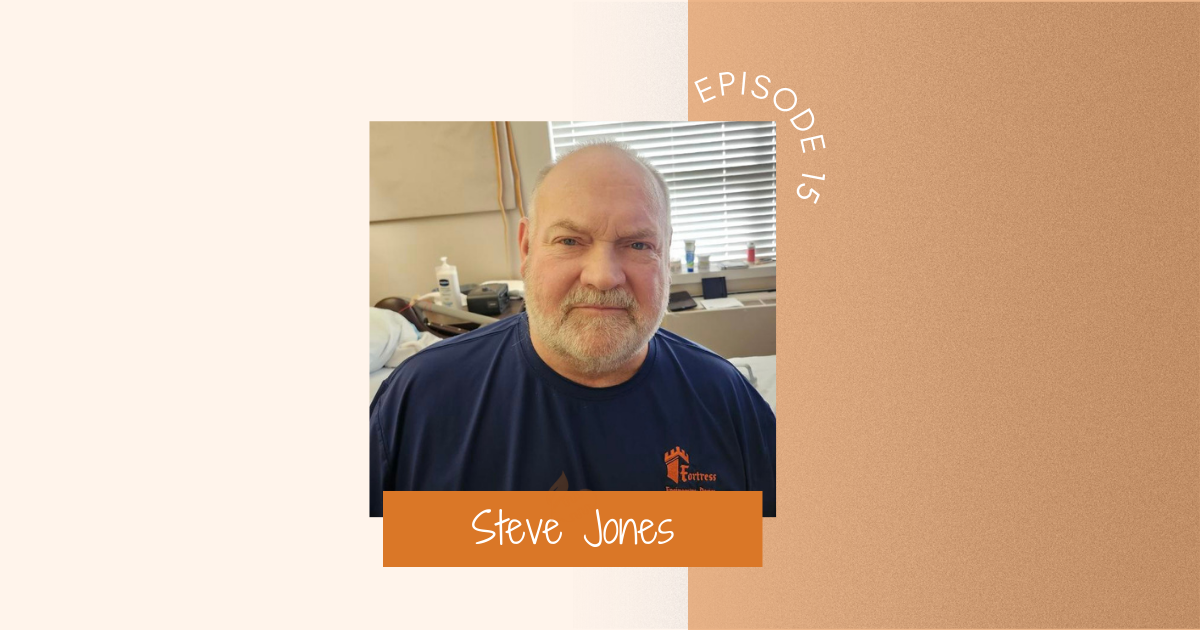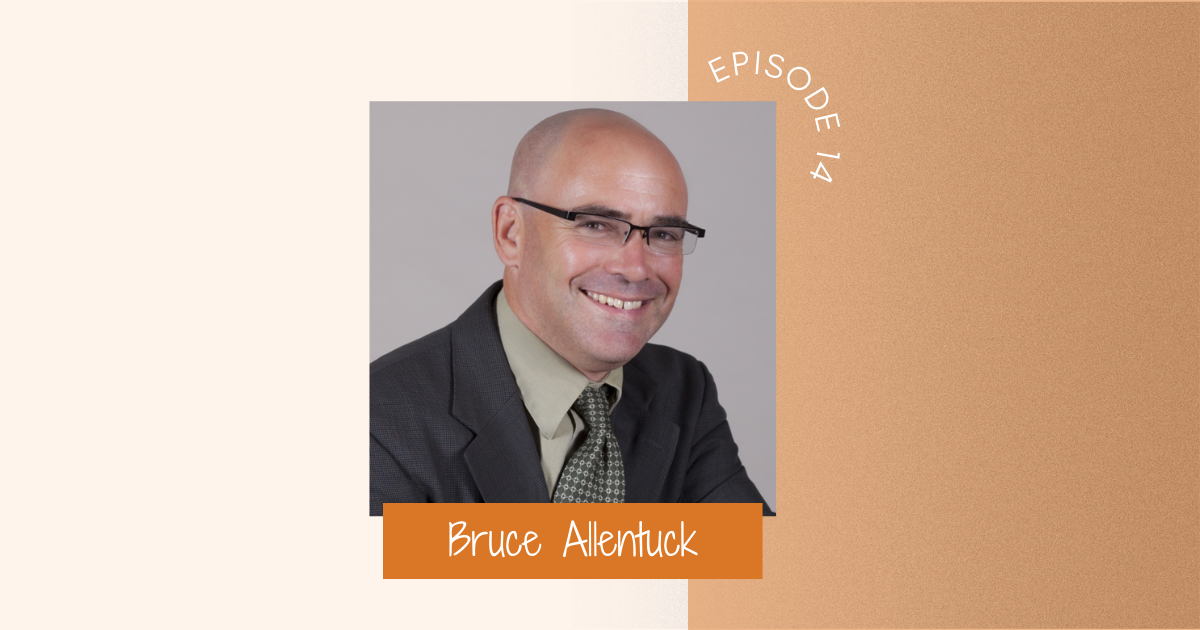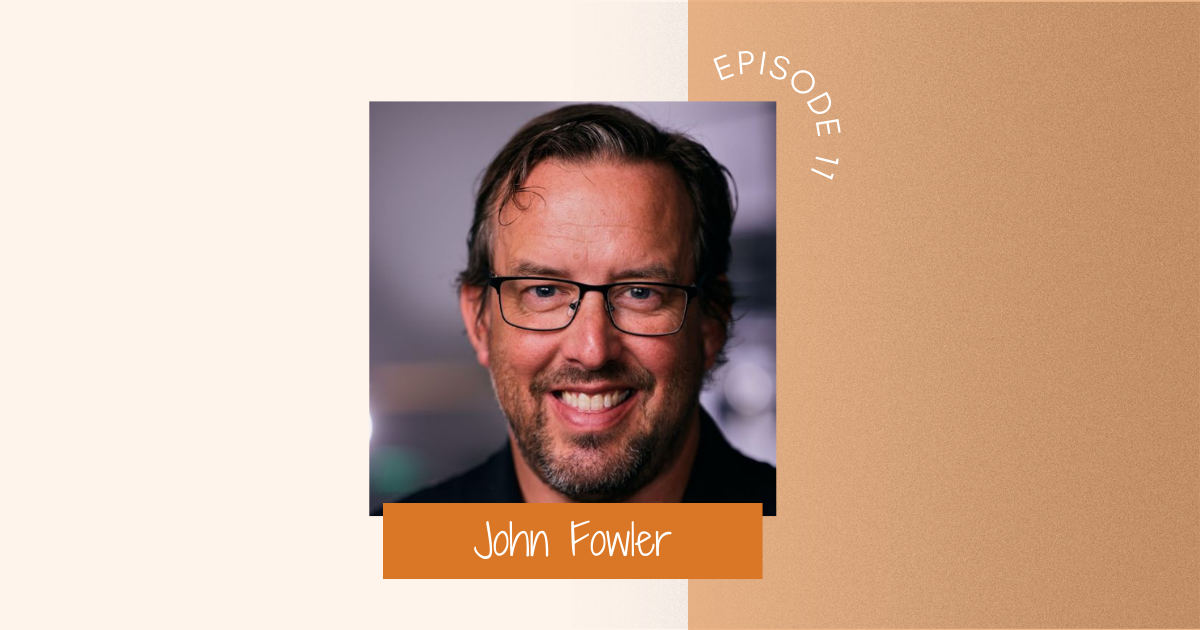Walk on the Wild Side: Hardscape Competition
OVERVIEW In a recent episode of SYNKD On Air, hosted by Turfs Up Radio, Angelique Robb and Steve Jones from Fortress Engineering Edging Restraints...

In this podcast episode, Steve Jones, the founder of FORTRESS Engineering, shares his journey and expertise in the field of interlocking concrete paving. With a focus on finding solutions and addressing known failure points, Steve discusses his early involvement in the industry and the excitement of witnessing its growth. He reflects on the misconceptions he had about edge restraints and how his curiosity led him to explore and understand the failures associated with them.
Steve shares his insights on the importance of considering factors like moisture, freeze-thaw cycles, and loads when designing and constructing pavements. He also discusses the development of Fortress engineered edge restraints, emphasizing the use of geogrid for better stability and load distribution.
Throughout the conversation, Steve emphasizes the need for continuous improvement in the industry and the importance of honest communication among contractors to address and overcome challenges.

Angelique
Welcome to SYNKD On Air with Angelique Rob, and I have our guest here today is Steve Jones from Fortress Edging. Hi, Steve, how are you?
Steve
I'm doing well. Thank you.
Angelique
Great. Great. Well, thanks for coming on the show. We're a new show, but I'm bringing people and products and people that are doing cool things to this and hopefully get you some exposure. But I met Steve at GIE about three years ago, I think it was the last year it was called GIE. And I really thought your products were fantastic. And solving problems that we'd had building driveways, Lock Block is what we call it in Scotland. driveways, because we would use a lot of cement hunching, I don't know if that's what they call it here. What was the use, but like, cement is just not that great of an edging restraint for ICP blocks, I guess, is what you'd call here? Maybe you should enlighten me about the terminology. But Lock Block drives are inherently, you know, kind of loose fitting. And so I loved about your Fortress Edging, how it was a physical restraint. And you call them engineered restraints. So tell us a little bit about your background, Steve, and how Fortress came about.
Steve
Well, thanks for having me, on your show, the Fortress Engineering came about because years ago, in the 80s, I started a company to install interlocking concrete paving. And that company was Paved Tech. Now, Pave Tech grew and matured, became a we we became a distributor worldwide for many companies and products. We also started developing and creating the solutions, the answers the products for the future. So to me, what I what I started focusing on in my career was finding solutions. Now that can go anywhere, solutions can deal with design solutions can deal with physical issues, you know, failures and things like that. I think I was always intrigued by solutions that dealt with, I would say known failure points. So it was intriguing to me to, to find solutions either by others, or to come up with them by myself. So it was always nice that when this industry started here in the in North America. It was early on that, that I was involved in the the start and growth of the industry here. So it was a fun part of the timing of that industry was exciting and fun for me. You know, as, as I think all businesses or industries start to mature. They're not they lose little bit of that
Angelique
Excitement?
Steve
Yeah, yeah.
Angelique
I guess you've you've sorted all the issues at that point. So you're a true engineer at heart. Are you?
Steve
Yeah, not a degreed engineer by any means, but certainly one that versed in the solutions filiation in the field, you know,
Angelique
well, and I found what what's so interesting is, you know, there's lots of ways to install interlocking concrete pavers, but then, you know, it's really down the road that you see that there's problems, you know, it can look pristine from the start. So you're really looking at how to combine construction or initial installation with what what it looks like down the road as well.
Steve
Right? People who, you know, I have a lot of a lot of respect for my own opinion. But I find that that even though for example, with the original pavets which is the first patent and edge restraint, this was goes way back then I thought I had the answer I thought I had provided the solution. But after I'd sold the company, Pave Tech, and they, they went off with Pave Edge. I, I was curious. I was very curious because I had some ideas that I had never, I didn't follow through on. So one side, I had sold the business. And I was starting to wonder what I was going to do. I started to go back and say, Okay, your ideas are to improve what you know the best, which happens to be edge restraints. And so I went back and started working on my newer designs, and found out that when I went back to the people that I had worked with 30 odd years ago, you know, and they're still in the business. And I'm talking to him, and I said, let's go look at some of your work. I respect the work you've done and the quality that you're in business with. Now, let's go back and look at him. And it's interesting that that I was coming at it not from a point of criticism, but as out of curiosity.
Angelique
Yeah. You weren't looking to criticize anybody. You weren't looking to sell them something else. You were just curious.
Steve
Yeah. And so as we went back to the jobs, and a good friend of mine, Joe Hedrick and Bob Swanson, from Meta Wood, were very kind enough to let me mess with their production schedule, and kind of screw up their installation, we would start to tear apart some old projects.
Angelique
Oh, you actually went and tore them apart?
Steve
Oh, yeah.
Angelique
Oh, my goodness.
Steve
I asked him, I said, Okay, what's failing? How all the things that we've worked on, together and apart? What worked and what didn't? And it was nice to be able to have those discussions and actually go to projects that were, you know, 20 plus years old.
Angelique
I was gonna ask how long? Yeah, 20 years, okay.
Steve
Well, it was hard to even decide which ones not to go to, but ones that they had an opportunity to upgrade. We're actually looking for a surface upgrade. So they're looking for newer pavers, newer shapes, newer patterns, colors. And with them wanting to do that for their customers. That gave me a great opportunity to go back and say, Okay, how was my solution? The grand solution, pave edge working? And lo and behold, ah, I lied.
Angelique
He lied.
Steve
I thought I had the answer. But with anything, over a good period of time, has a lot of errors.
Angelique
Yeah, and usually it's going to be driveways, isn't it? Or is it paths as well?
Steve
Well, both of those driveways. Luckily, when I got started in the industry and my friends got started, it was we were lucky enough even though that there are a fair number of sidewalks and patios. We are obviously more intrigued by the bigger pavements, you know, the ones that actually took a beating. When we went back to those projects, and the fact that they were able to let me play and allow my case, for me to, understand what had happened, how these failures and failures they were, but they were slow failures. And, and I think that's what most people in our industry, whether it's pavers, retaining walls, failures that are happening or have happened, for the most part, they're either going to happen quickly, which means you did a really horrible job. Or they're gonna go slowly, which means maybe we didn't do the best. We didn't know enough.
Angelique
Or do they understand the failure mechanism or the loads on it, I guess?
Steve
Oh, yes. That's very, very well said because there is no way you would think that after putting down two feet of crushed aggregate base, compacting it with large compaction equipment, until the point where you're this spikes we used to hold down the edging, what the spikes would bend is we're nailing them in there, we're kind of that's not going anywhere. Lo and behold, again, I was wrong. So what was happening? Moisture, freeze thaw moisture, and loads, you brought that up earlier. The loads are everything. And when that when do they happen? When you got heavy moisture in the aggregates for the base, when you've got your pavements that are, I would say in the spring, parts of the winter fully saturated with water, moisture there those loads, even though they seem small, like a tire on a on a car. Every time it passes, it can cause movement. Now, the things that I was lucky to understand, learn and educate myself over the years. Thanks, to ICPI was that learn all about x loads and all of those things that teach you in engineering, that that there's so many more factors that you
Angelique
Need in the world? Yeah.
Steve
In the real world comes up in the kind of slaps you upside the head.
Angelique
Yeah, all this leading to the fact that our jobs are more complicated than they seem at first, you know, we are dealing with a lot of weather factors, outside factors on anything that we build. And whether it's hardscaping or soft-scaping, you know, we're dealing with elements all the time.
Steve
Yes, definitely. So those, those influences on the, I would say the longevity of any construction, need to be better understood by those that are doing the construction. And understanding which of those areas are probably, you know, you got to go through and prioritize where are you going to put your money? Where are you going to get longevity? And I thought I had solved the biggest problem, which in my mind at that time, was edge restraints hold the system together. And you'll be good. Well, I was wrong.
Angelique
Oh, well, it's good to admit it.
Steve
Yes, I get that off my chest. And I'll have to flog myself to make sure that I that I say penance for for what I thought was I was doing the right thing. But that that was the impetus, and the growth and the start of Fortress engineered address traits, because that's what I finally understood that I really, truly didn't understand.
Angelique
And so it was the actual pin in the aggregate that was failing.
Steve
Yes. Okay. So far finding out that you've got a 12 inch steel spike down and into fully compacted aggregate base. And with every time a wheel load or gosh forbid, a people walking on the edge in a highly, highly saturated environment that, that papers that edge moved.
Angelique
And you think, did you say earlier that you think it was just slowly moving a little bit all the time or...?
Steve
That reload every time there was a load? Whether it was somebody walking on it, or a car or a delivery truck. Anytime there was an active load if it could move. So that saturation thing, sweat when I finally understood that saturation, no matter how hard you compact the gravel, no matter how deep it is, no matter what quality of aggregates you use. It's at risk.
Angelique
And we can't keep it from getting wet. That's for sure.
Steve
Yeah, that's, that's the issue, right? Because, yeah, yeah, you can't stop the world from doing what the world does.
Angelique
Okay, so that's what leads you and to do in fortress engineered edgings. And what how long have you been doing these products?
Steve
Well, I started them about just about the time I met you about three years ago. Oh, really?
Angelique
Oh, I didn't realize it was then.
Steve
My curiosity got the best of me. So then I started designing and building, what I would feel is the next stage in edge restraints. And how best to get a better grab on the ground and in the world hold everything in place. So steel spikes were not the answer. Doesn't matter how long they are. They could be six inches, 18 inches doesn't matter. And that's the part I started to understand. Yeah. But then the question came was, well, how can we hold this? What's gonna hold it. And then the realization that geogrid can provide a much wider purchase into a payment system than just a sales spike. And that's where the concept and the patents for Fortress engineered edgy strains came from.
Angelique
Okay. When I guess you're spreading the load to instead of having it just on that, and that spike, and it's one failure point, it spreads it across the whole load of the geogrid. Is that?
Steve
Well, yeah, as as you layer and then you build your pavement as best you can, with aggregates and compaction. And then how to attach an edge restraining steel spikes alone won't do it. Concrete doesn't work well. Because it doesn't literally doesn't do well, in grabbing hold of anything other than a surface attachment.
Angelique
And it shrinks while it's curing to which doesn't help. And then, yeah, once it shrinks, then you have a gap between that and the whatever you're trying to hold. So it's never going to be a great fixer. I feel like.
Steve
There's a lot of companies out there with different ideas about edge restraints, and, okay, that's fine. Proof is in the pudding, as they say, of all the people in the industry. I don't know if it's good or bad, but I happen to have the most experience in the industry for edge restraints. I guess. Shame on me for not recognizing the failure earlier on. As I as I've queried numerous contractors since my enlightening. Yeah, I was like, Whoa, I would ask, Okay, have you had failure? Most of them say no, no, it's all good. I go "No, it's not telling me the truth." And they kind of go well, you know, depending on the job, depending, you know, does the grade roll off and stuff, you know, off and down and yeah. In to kind of go, Okay, tell me? Well, there's jobs that we have to reset the edge every few years. It's interesting that even people, I didn't know it was that mean, but I always appreciated the truth, and honesty of contractors. But contractors in general are nice people. So they don't go out of their way to hurt your feelings.
Angelique
So nobody reached out to tell you about the failures along the way until you started asking. Steve That's correct. What the heck? And then well, yeah, well, we just fixed it. You know, every few years, we go back and fix it again. And I go, Well, that's not good.
Angelique
A good solution. No, no. And I guess if you compare it to what they were doing before, maybe, you know, everything is progress. And, you know, that's the thing. The goalposts are always moving these days because of people like you that are innovating and doing things better. But better, you know, when you're not gonna know that it's better until it's been through the wringer and it's been tested as much and you know, you can plan and test and all that as much as you can But the real world, you know, you need real world experience and prove it. And there'll be iterations on, I'm sure your Fortress engineering restraints, you know, at some point too, because you know that we're all learning. That's what progress is, is seeing how it behaves over time and, and doing it better. So maybe they weren't complaining because they still knew it was better than what they were using before.
Steve
Well, I think part of that's true, but from my perspective, I go, why didn't you tell me? So, but everybody, you know, when they see a failure, there's a lot of guys out there today. Luckily, the industry has grown so much. And the number of products that are out there today are tremendous. When I started, the answer to edge restraints was, well, if you put us wooden timber in or you travel in some concrete, yeah, that was never a great answer that that those were guaranteed failures. So it's nice to have grown up in the industry matured, and now, in my twilight years, let's not say that. But as I've gone on, for so many decades, I've seen guys that are so passionate. It's it's, it's wonderful to see these people that are so still so passionate.
Angelique
Great, well, I love the story, I think, you know, we need problem solvers out in the industry. And I thought what was so interesting about your story, when you told it, to me, we ended up talking about this a while back, was that, for me, it's that connection between construction and long term maintenance. And if you only construct driveways and hardscaping, and you don't do maintenance, it's, you know, I know it's two different jobs, but you don't see the problems with your work if you don't go and look for it. And so the problem with not understanding how people are going to maintain what you've built, means that they could actually undermine how you construct it.
Steve
That's that fine line between, I would say engineering, design, and construction, you've got those three components that are critical to the survival and performance of the project. So and so many people, and maybe used to be that way too? You know, I had a lot of respect for my own opinion. But I also was willing to look at and go, Oh, okay, that's a good idea. But what I find today and hard-scapes, is that it's a price issue. Projects have a tendency to fail number one, because I think, perhaps does. It really kind of depends where the impetus from the project is. When you have a designer or an engineer, they're focused on those factors. Most, when you're a contractor, you're focused on getting the job and installing it well. But any one of those points of involvement, if you're not focused in the long term, can cause early failure.
Angelique
Or not spending the money to ensure that the longevity remains.
Steve
Yes, yes.
Angelique
You can spend money on nicer paving instead of the restraints to keep it in place. And that's really misguided, isn't it? Because it's going to look bad in a few years, instead of lasting that 20 plus years without, you know, any interference and not, you know what, what we're trying to build it SYNKD is you know is that consideration because the only way you know I I often hear of people saying our industry isn't taken seriously or isn't in a proper industry, or people think we, you know, work for peanuts, you know, low cost jobs and stuff like that. But I also feel like, if we're not combining design, construction, and when I say maintenance, I mean longevity, and doing a quality job that stays looking how it does from install day for as long as possible with the least amount of interference or maintenance needed. I think that's where we can really make an impact on what people think about our industry. And, you know, making sure that we are paying attention to all those details, like edging might seem like a small detail, you know, but at the end of the day, it will make the whole project stay looking good, or deteriorate quite quickly. So it's quite a major part of it.
Steve
It's kind of like a rug, when it starts to unravel, you know, you would see a rug where you'd see a thread, you wouldn't pay attention to it, you wouldn't deal with it. And then a week later, you'll see that there's not a really long thread coming out of the rug, and the thing starting to unravel. And that's very similar thing to what happens to, I would say to segmental paving, if the first point of failure is the edge restrain, once the edge is straight starts to shift, everything is guaranteed to fail. How quick? Well, that's depending on how it was done. But that movement of the edge or strength, and the unraveling, or the unlocking of the pavement, is where things start to go bad in a hurry.
Angelique
I guess it's kind of like, it was making me think when you were talking about it, like how an avalanche or something starts, you know, it could be the slightest movement, but it's been building to that it's been slowly, like, just unstable. And as soon as something gives, it's a catastrophic failure.
Steve
Well, by the time you realize it, and you look at it, and you go, Oh, this projects dead, it's finished. The real issue is is that some people will will actually go out and try to repair pull it up and and fix it. But depending on the shortcomings of the project, it's not many times it's not worth the effort. There's nothing more depressing than redoing a job. As a contractor, and you would go to a job and you gotta go. What do you mean, I gotta fix it? I know, I got a fix it but, why? And then that's where it goes. That's where you have to do that investigation, understand the point of failure. And it goes way back and doesn't happen at that moment.
Angelique
A lot to think about. I really admire you for owning up to your lies. It wasn't lies, you didn't you didn't lie on purpose. You know, you're doing the best you could. But I think it's, you know, it takes a lot of guts to say, I did this wrong, and I'm gonna work on it and do it better. So I think, you've taken the admirable path. And, yeah, getting those problems solved. So I really appreciate your wisdom and your experience and explaining all that to us. And hopefully, our listeners have learned a thing or two, and where can they find information on your edging? Do you want to give us your website
Steve
Sure. Website is fortressedging.com and Steve@fortressedging.com is my email address. Always feel free to reach out and talk about issues. I've spent my entire career working with contractors, designers, engineers, trying to make a better system. So you know, you mentioned that some people kind of looked down on our industry and I don't really, you know why I would I would vociferously argue with them that they don't they don't know enough to do that. So there are the number of companies and the number of people that are dedicated to providing a great segmental system, both pavers and walls. These companies, they're everywhere. And there are some that, okay, maybe don't don't hit the top mark. But I would say the vast majority of them do, and the factors and the designers and the architects, they are the ones that actually have a much I would say, a much longer view towards those projects, then homeowners or contractors. Those are the people we need the listen to.
Angelique
Well, you keep solving those problems and giving us those solutions. Thanks for coming on the show, Steve and look forward to talking to you again.
Steve
Okay, Angelique, thank you so much.
Angelique
Thanks, Steve. Steve Have a good day.

OVERVIEW In a recent episode of SYNKD On Air, hosted by Turfs Up Radio, Angelique Robb and Steve Jones from Fortress Engineering Edging Restraints...

1 min read
Overview In this episode of SYNKD On Air, host Angelique Robb welcomes Bruce Allentuck, founder of Allentuck Landscaping in Maryland. The two...

OVERVIEW In the recent podcast episode, host Angelique Robb interviews Johnny Fowler from Outlive, a company that distributes Millboard, a composite...